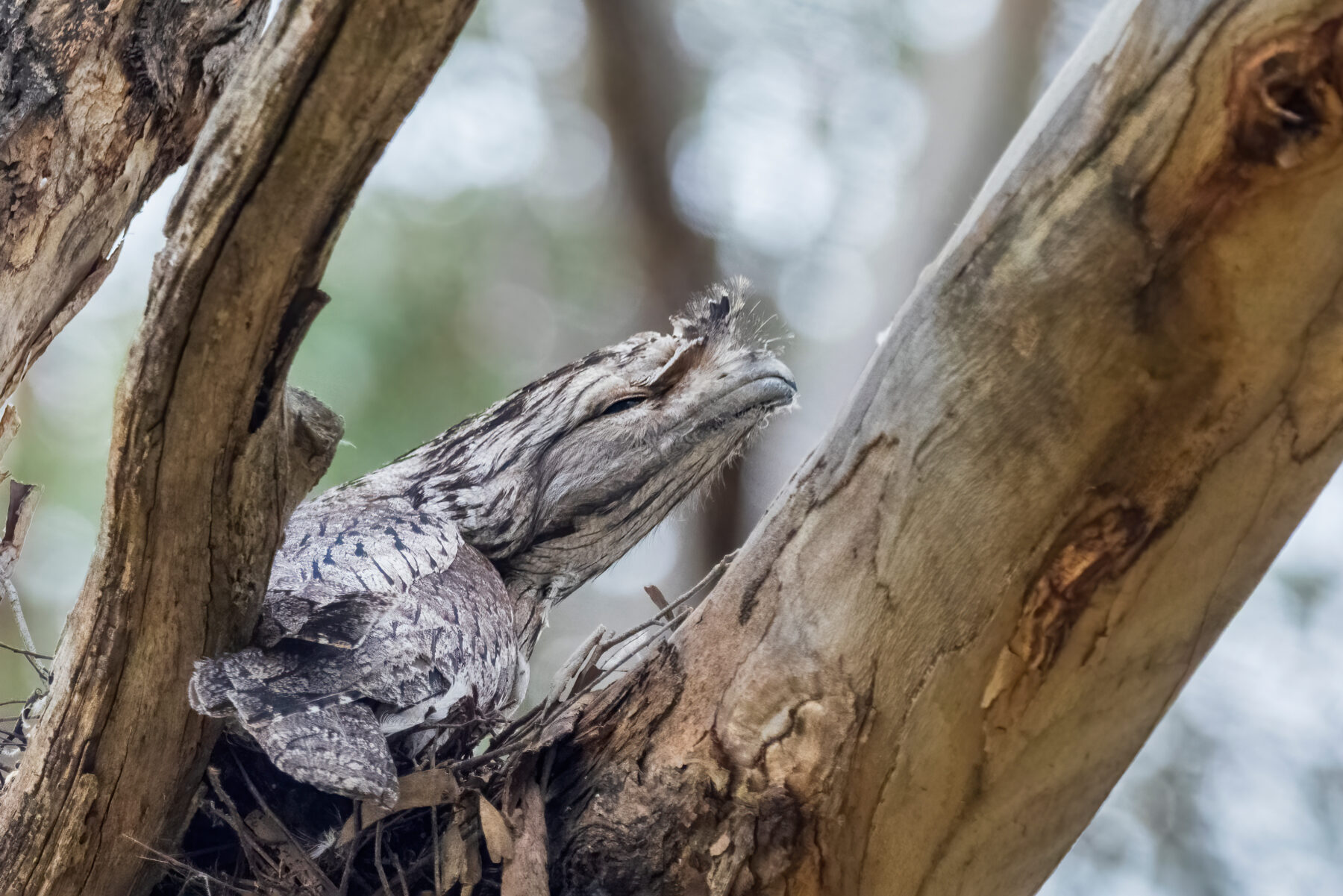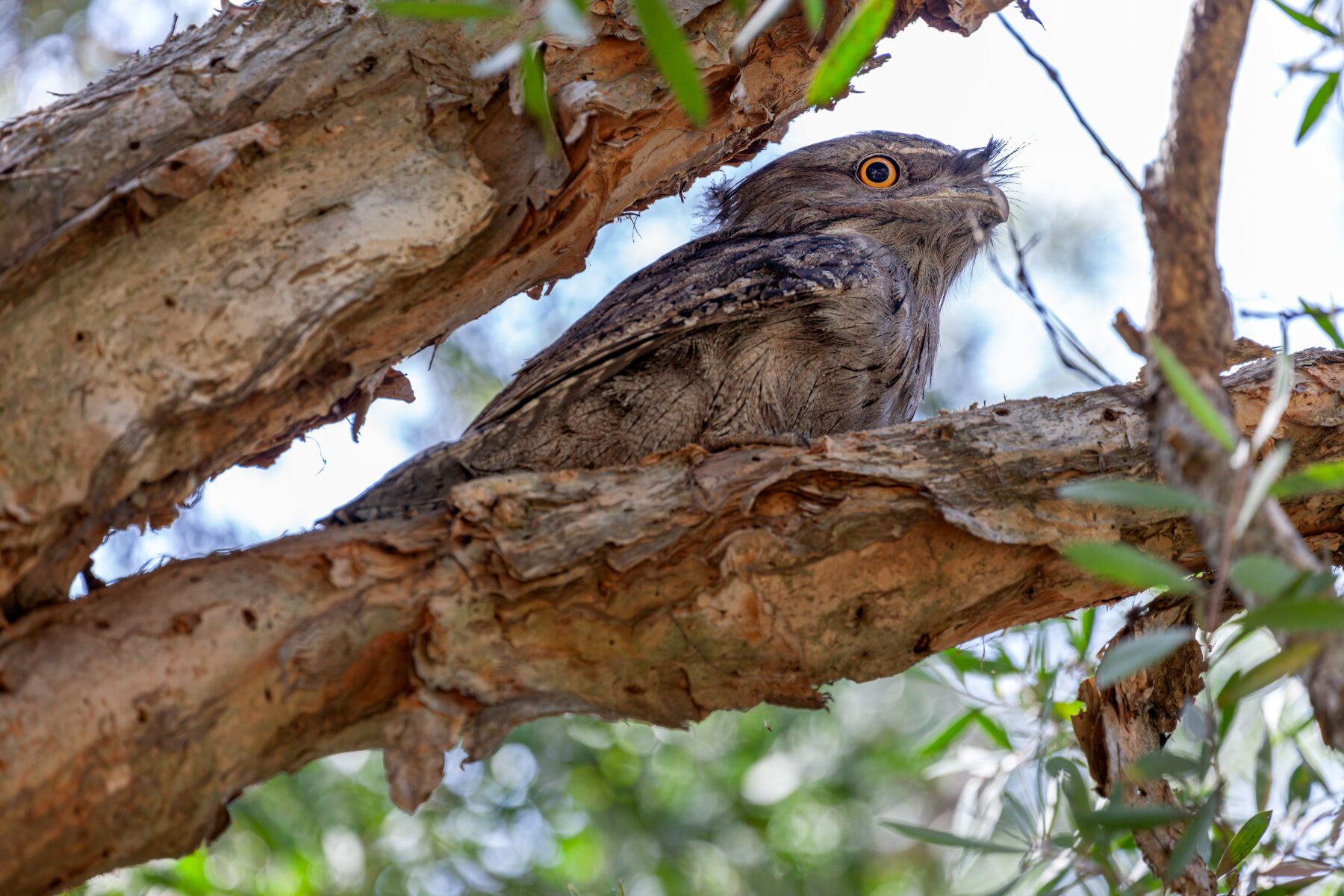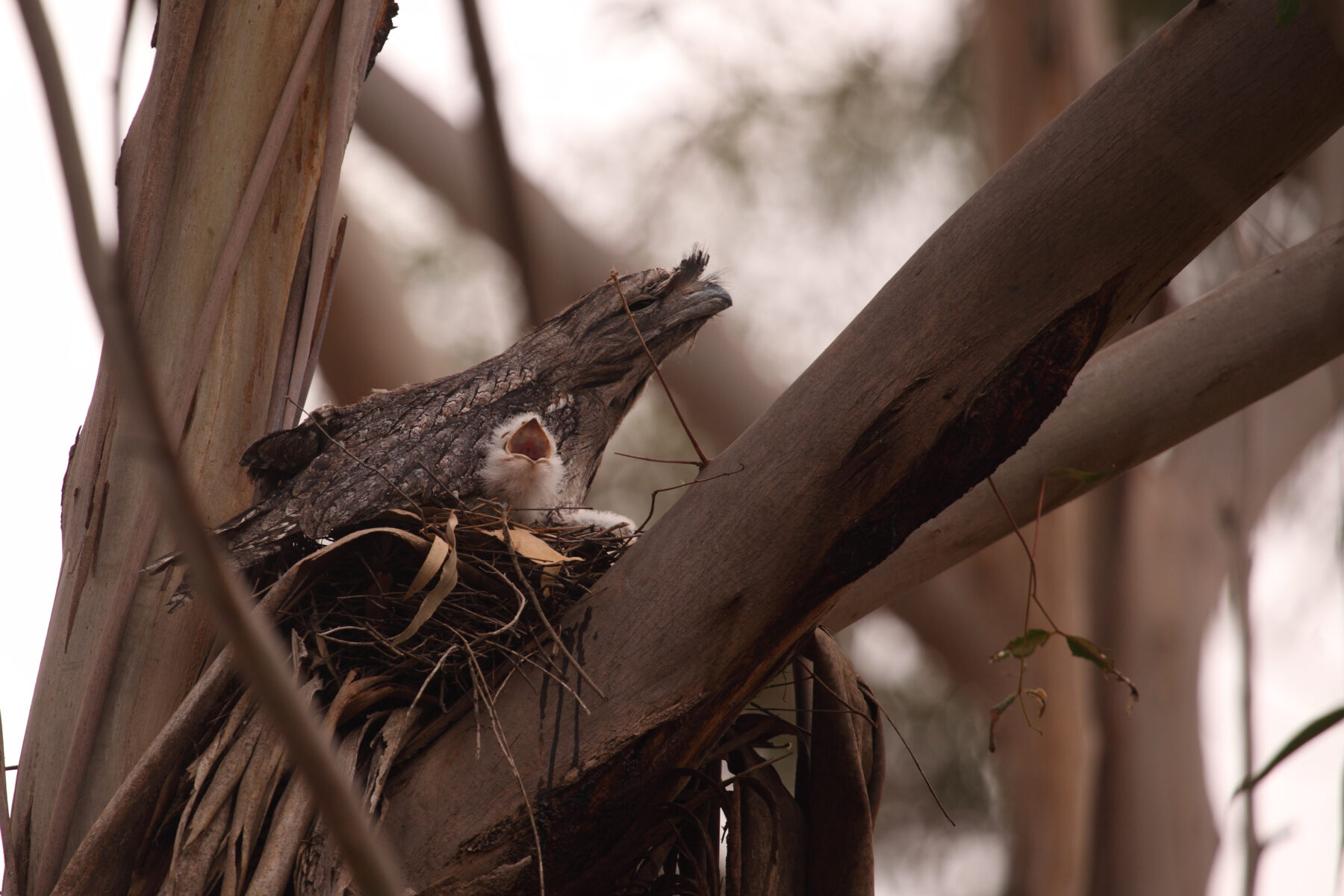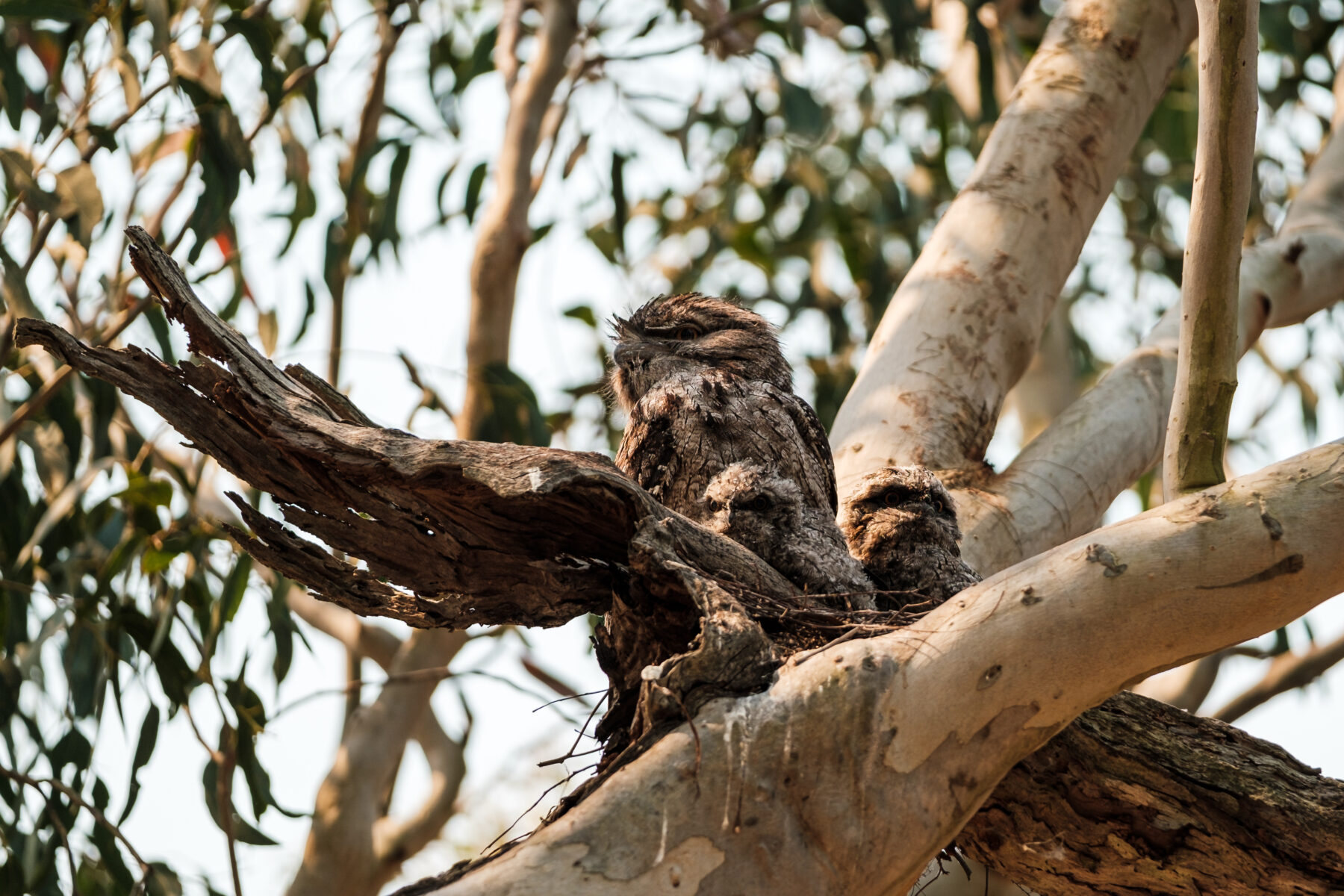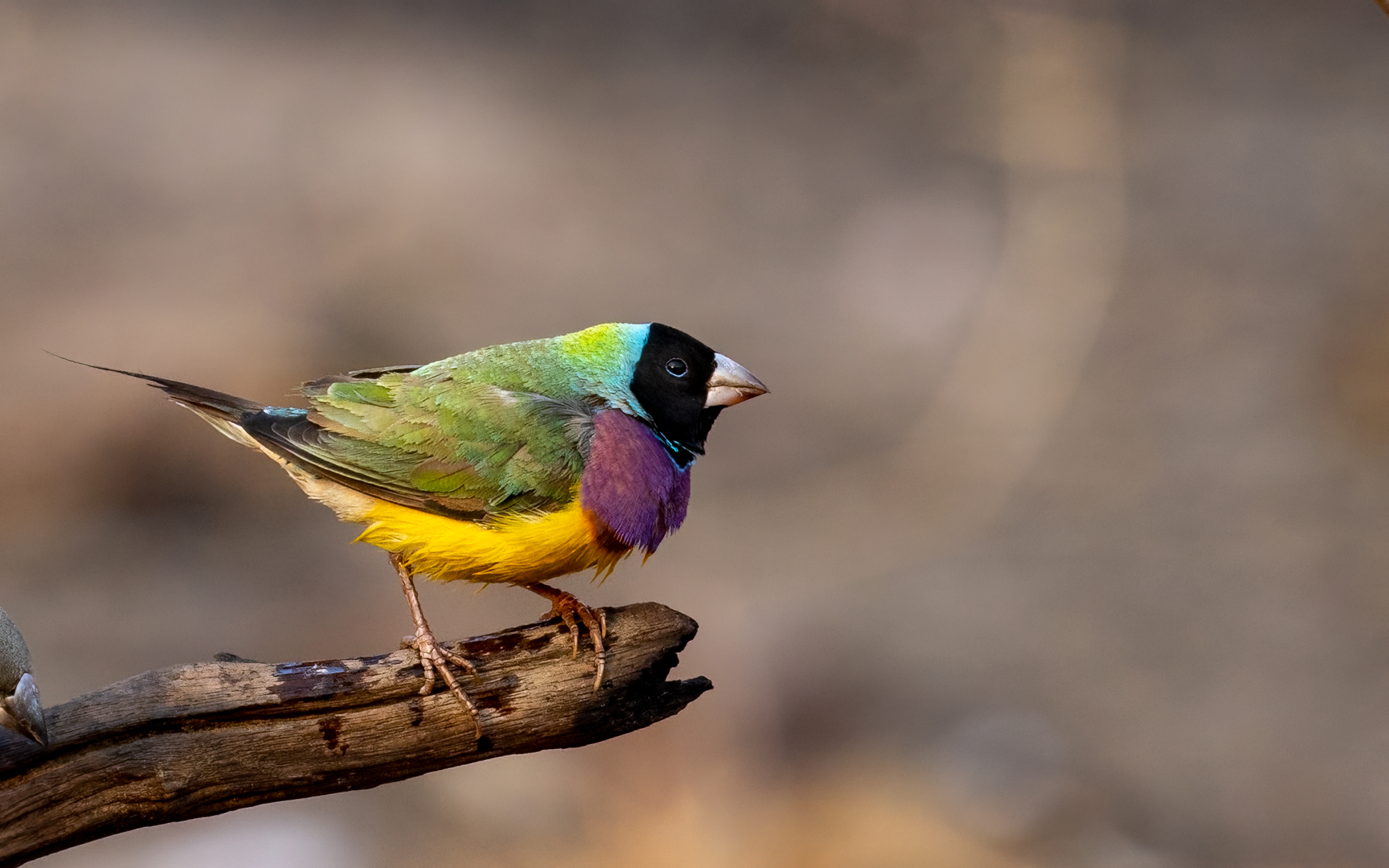| Common name | Tawny frogmouth |
| Scientific name | Podargus strigoides |
| Type | Bird |
| Diet | Insects and centipedes, slugs, snails, worms and spiders |
| Average lifespan | Up to 14 years |
| Size | 34cm to 53 cm, weighing up to 680g |
The tawny frogmouth really does live up to its reputation as a master of disguise. When it isn’t mistaken for an owl, the tawny frogmouth is easily overlooked as just another branch on a tree, yet despite its ability to blend into the background, tawnies are often described as one of Australia’s most-loved nocturnal birds.
More closely related to the nightjar than the owl, the tawny frogmouth is mottled grey, white, black, and rufous, allowing them to easily become camouflaged with the bark of a tree.
Like owls, their feathers are soft which helps them fly silently through the air, but they lack the strong, curved talons that owls are renown for.
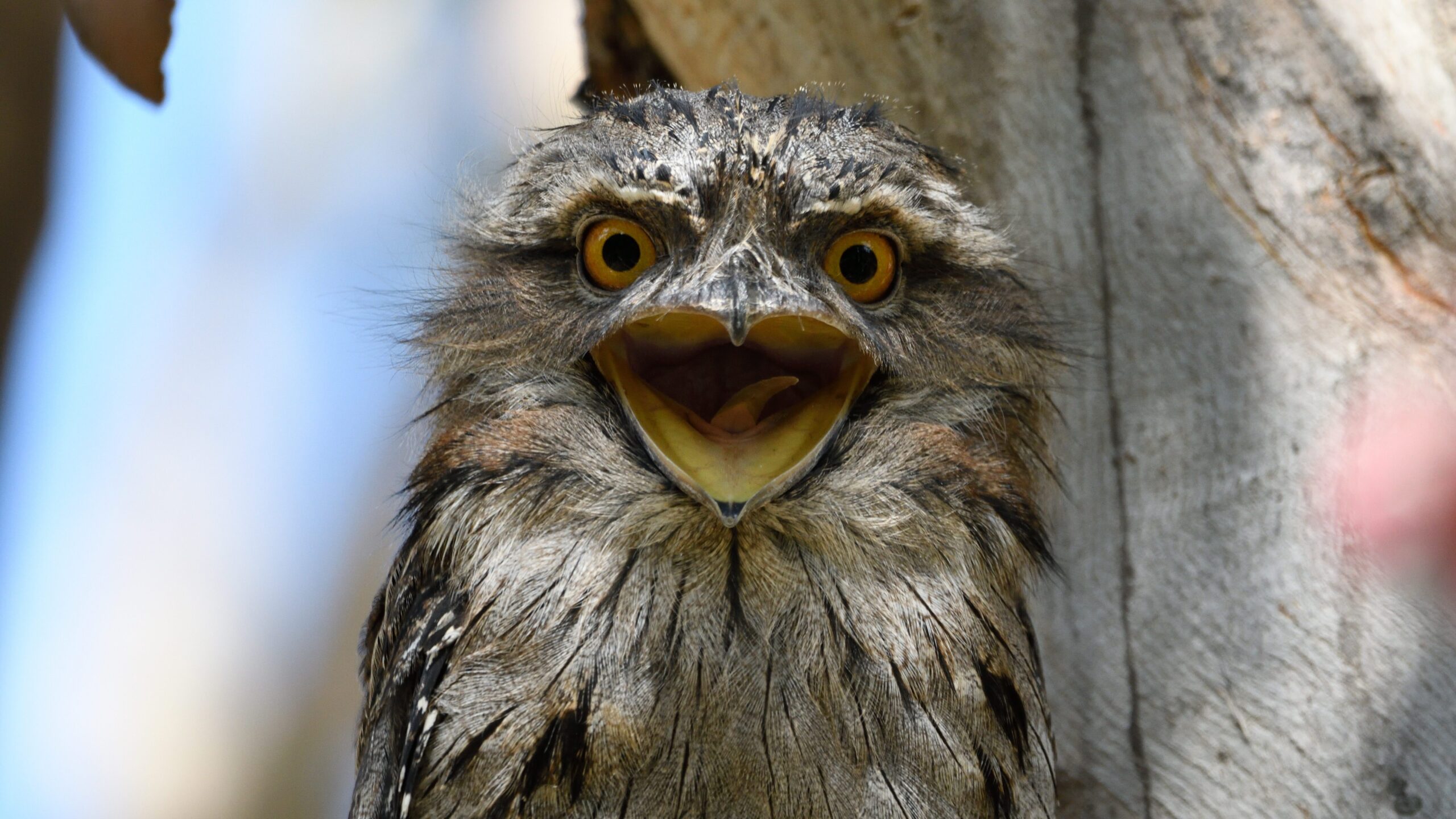
Beard-like bristles around their beak may look like whiskers, but they help detect movement of flying insects and offer a level of protection to the bird’s face. Their name stems from its large and wide beak which resembles a frogmouth when opened.
Found throughout mainland Australia and Tasmania, the tawny frogmouth makes its home in almost any habitat (except denser rainforests and arid desserts). Preferring open woodlands, the birds can also be spotted in parks and suburban gardens, alpine woodlands, and rainforest margins.
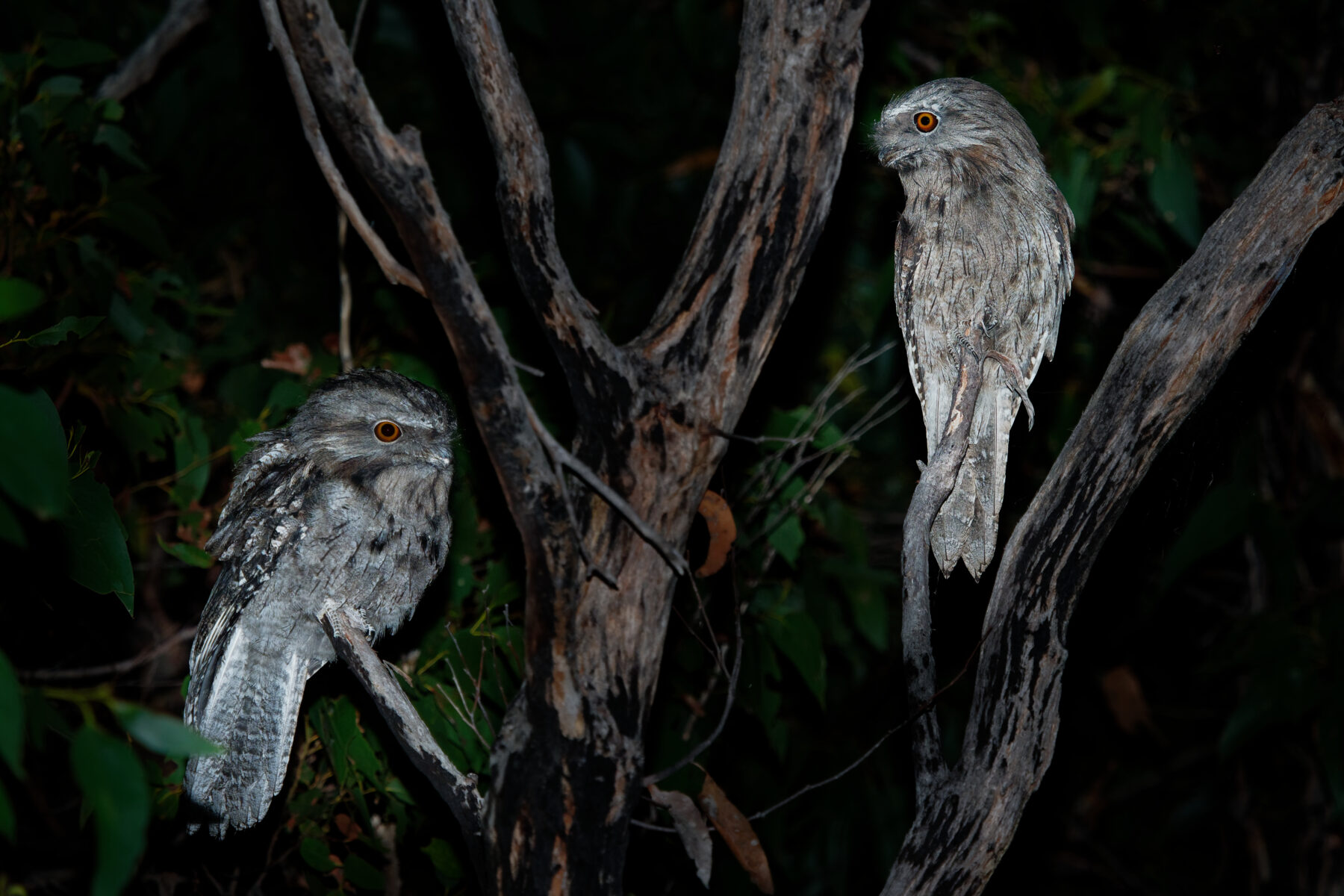
Nocturnal, the tawny frogmouth becomes like a statue during the day, effortlessly taking on the appearance of a dead tree branch while sleeping. Dusk is when these birds spring to life and can be seen bobbing their head and flying around to catch their prey during flight. They can also carefully and motionlessly watch from above in the tree canopy before swooping down to pounce on an unsuspecting meal. Primarily insectivores, the tawny frogmouth diet consists mostly of slugs, snails, worms, spiders, and centipedes, yet occasionally they eat larger prey such as small mammals, frogs, reptiles, and even small birds.
Quite the romantics, tawny frogmouths mate for life and often stay within the same territory with their breeding pair for more than ten years or their entire lifetime. Breeding season occurs between August and December when females lay two to three eggs in a nest made of sticks and leaves within the tree branches. Taking turns to incubate the eggs overnight, it’s the male who also works the daytime shift, tasked with keeping the eggs warm and safe.
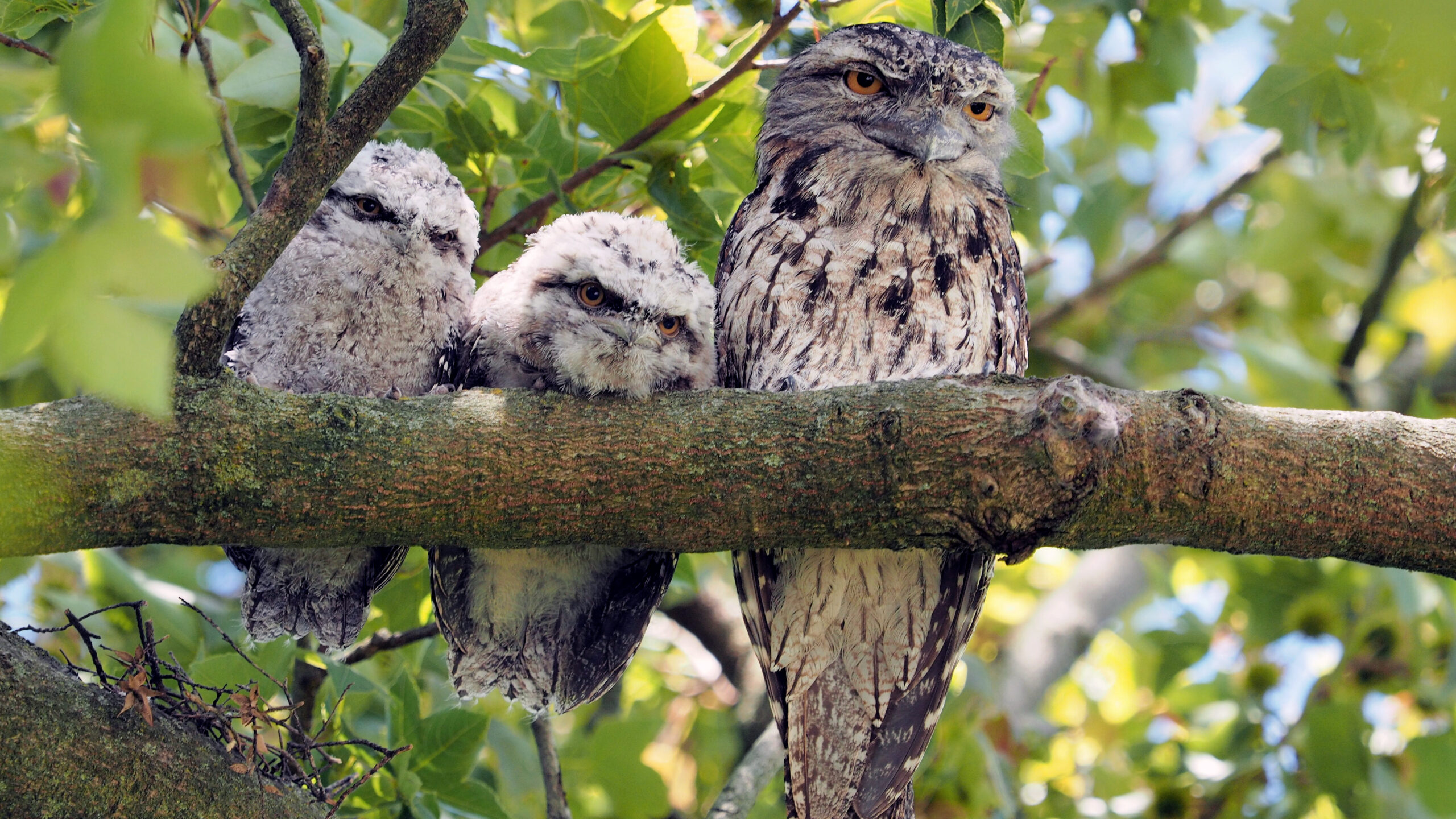
Once tawny chicks hatch, these fluff balls practice their camouflage postures under the watchful gaze of their parents and the bird family can often be seen all sitting together on one branch. Their call is a soft and low “oom-omm-omm-omm” sound but tawnys can also make a loud hissing noise if threatened.

